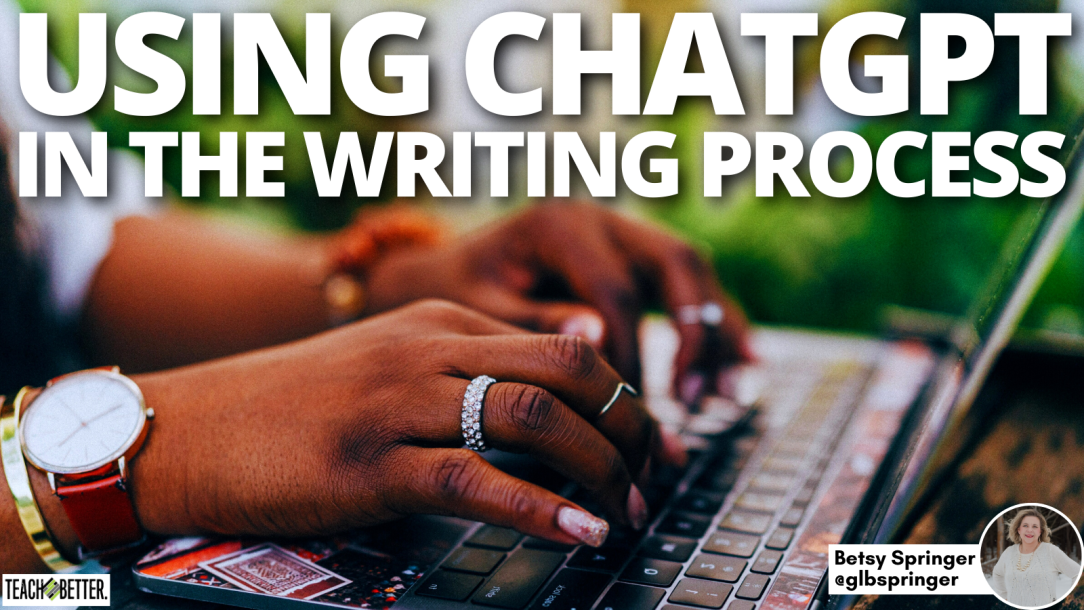TL;DR:
- As teachers, we can accept and embrace AI tools.
- Some examples of how chatbots can be acknowledged as part of the writing process are shared.
- See AI chat as a way to help prepare students for the future.
Using ChatGPT in the Writing Process
I’ll admit, my first reaction to AI authors was a mixture of horror and fascination, akin to my reaction to a natural disaster.
However, as more information and examples have been shared, I have come to accept AI tools as the way of the future. Look at chatbots as spelling/grammar check 3.0. If spell check was the first generation of computer-assisted writing, and Grammarly was 2.0, chatbots are a natural leap into the future. They are not going away. Rather than work to ban them (a futile exercise), how can teachers embrace this new technology? Furthermore, what is the role of education in preparing students for a future in which chatbots exist, for better or for worse?
If spell check was the first generation of computer-assisted writing, and Grammarly was 2.0, chatbots are a natural leap into the future. Click To TweetHere are a few ways that chatbots could be acknowledged as part of the writing process, while still encouraging authentic student work. For these examples, I will use ChatGPT.
- Use a chatbot to generate an outline on a topic. All writers suffer from occasional writer’s block. Furthermore, many struggling students feel insecure about how to get started on a writing project.
- Generate a rough draft with a chatbot and ask students to practice evaluating or giving feedback. This could be valuable for virtual students when they do not have classmates with whom they can easily interact. It can also emphasize the limitations of the chatbot with students. Give the students a prompt and a rubric. Have them grade the chatbot’s essay, giving specific feedback on how the essay needs to be improved.
- Make a game out of “tricking” the chatbot. Often, it is reported that AI can fabricate sensible writing out of nonsense facts. Use this to examine the limitations of chatbots, or even, as a longer project, how they change over time. Do they learn as more people ask them questions? Can they utilize reputable sources?
- Enter a writing sample into the chatbot and ask for feedback. What are common mistakes the chatbot can find and what does it miss?
As an online teacher and instructional coach, I am constantly wondering how to stay on the right side of innovation.
Ignoring or dismissing AI is not going to be the way to stay relevant in education in the future. Using AI chat in the classroom is more than “If you can’t beat ‘em, join ‘em.” Rather, it’s a way to prepare students for their future, which looks a lot different than it did when I was in high school.
About Betsy Springer
Betsy Springer is a teacher and instructional coach at Gull Lake Virtual Partnership, a school in the Gull Lake Community Schools district in southwest Michigan. She teaches ELA for grades 6-12 and provides instructional coaching for virtual teachers K-12.
With nearly 20 years of time in education, Betsy has a bachelors in secondary education and a master’s in education technology. She is pursuing a Ph.D. in education policy. Betsy’s passion is supporting and advancing disruptive and innovative education.
Betsy lives in northern Michigan with her high school sweetheart and four children, who are her best teachers.




